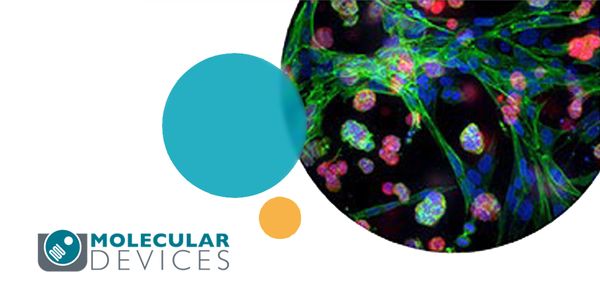Image Capture and Analysis
Image Capture and Analysis: The process of obtaining a digital image from a vision sensor, such as a camera. Usually this entails a hardware interface known as a frame grabber, which captures single frames of video, converts the analogue values to digital, and feeds the result into the computer memory. The conversion process is often accompanied with image compression.
-
APR 17, 2018 | 8:00 AMDATE: April 17, 2018TIME: 8:00AM PST, 11:00AM ESTRecently, much research has focused on obtaining 3D brain organoids in an attempt to better recapitulate brain development and function...Speaker: Cassiano Carromeu, PhD , Grischa Chandy, PhD , Oksana Sirenko, PhDSponsored By: Molecular DevicesAPR 06, 2018 | 9:00 AMDATE: April 4, 2018TIME: 09:00am PDT, 12:00pm CEST Multiplex is the ability to characterize three or more biomarkers on a single tissue section. The technique enables the combi...Compassion fatigue, or the state of chronic stress for those caring for people or animals in distress, can affect anyone working in the lab animal sciences. This can even affect employe...Speaker: Jennifer Jones, BS, RLATPresented at: Laboratory Animal Sciences Virtual Event Series 2018
Preclinical translational imaging, and specifically molecular imaging methods such as positron emission tomography (PET) or single photon emission computed tomography (SPECT) as well as magne...
Speaker:
Paul Makidon, DVM, PhD, DACLAM
Presented at: Laboratory Animal Sciences Virtual Event Series 2018
The translation gap in biomedical research can be attributed in part to differences in how outcomes are assessed in preclinical research and in the clinic. Reasons for these mismatches includ...
Speaker:
Jamie Ahloy Dallaire, MSc, PhD
Presented at: Laboratory Animal Sciences Virtual Event Series 2018
Analgesics are commonly employed drugs for perioperative procedures and are required for painful procedures. They include not only non-steroidal anti-inflammatory drugs (NSAIDs) but also opio...
Speaker:
Ignacio Alvarez Gomez de Segura, DipECLAM, DipECVAA
Presented at: Laboratory Animal Sciences Virtual Event Series 2018
Assessment of how changes in husbandry affect an animal can be challenging as most common methods of assessment, such as corticosterone levels, are more reliable for assessment of acute stres...
Speaker:
Debra Hickman, DVM, MS, DACLAM, DACAW
Presented at: Laboratory Animal Sciences Virtual Event Series 2018
Digital technology is improving the speed and accuracy of all the world’s work processes and activities, the including the research vivarium. This presentation will address some...
Speaker:
John J. Hasenau DVM, DACLAM
Presented at: Laboratory Animal Sciences Virtual Event Series 2018
There is a growing debate about the usefulness of animal studies in biomedical research and drug development. Some of the challenges in translation from animals to human patients may be from...
Speaker:
Natalie Bratcher
, Sean Maguire, VMD, MS, DACLAM
, Laura Schaevitz, PhD
Presented at: Laboratory Animal Sciences Virtual Event Series 2018
Nonterminal blood collection from mice is frequently performed in biomedical research. Multiple phlebotomy sites and restraint techniques are available to investigators. Methods that minimize...
























